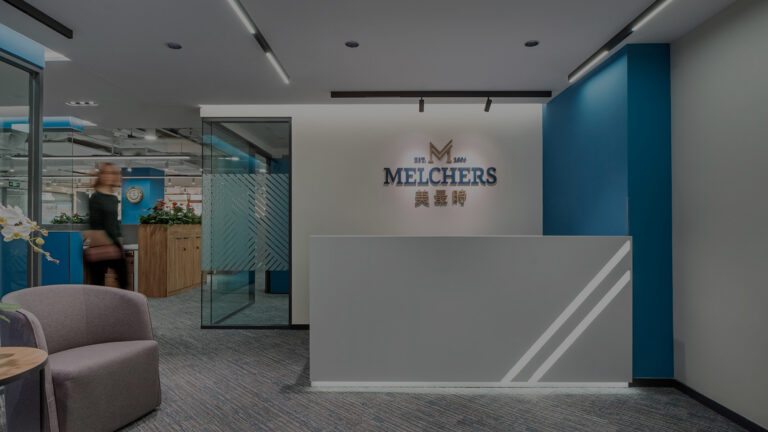Nation branding is important for countries to attract more investment and a high-skilled workforce, support the export of products of local companies, and promote tourism. Companies that export products will also benefit considerably from a strong country image – a Nielson study found that over 70% of global consumers believe that the location where a product comes from is important and affects their purchase decision.
Brand Positioning of a Nation
What is the positioning of a country? Ideally, this is the well-planned and consistently promoted image that the name of a country then evokes in people’s minds. It is very much about differentiation and how the country sets itself apart from others. When we think about Germany, we think about reliable, high-quality products that are often technically advanced. Italy stands for lifestyle, good design, and high-quality fashion. Switzerland stands for precision, focus on details, and safety. A lot of work and time is required to create a powerful and authentic nation brand. Several organizations regularly measure the strength of country brands.
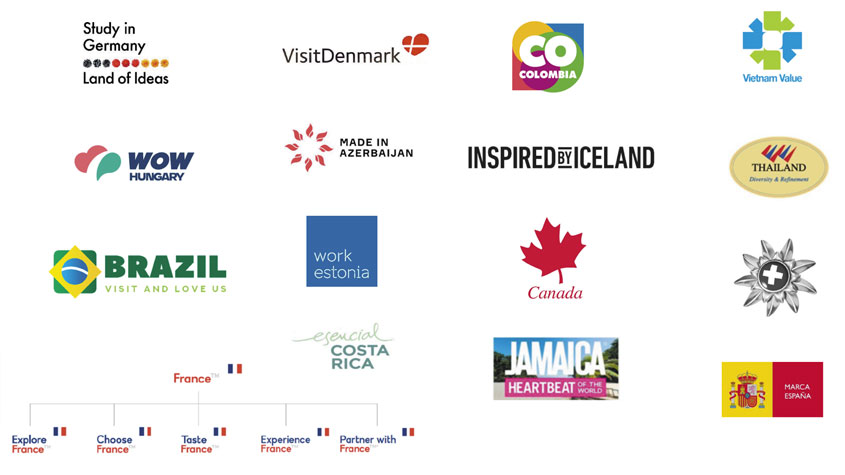
Examples of the logos of a number of nation branding campaigns
Visibility
Some country names are well-known worldwide and are clearly associated with their positioning. In other words, people in different geographies have the same, consistent, and positive image of a certain country. This means that those countries have done a successful job in positioning and marketing themselves consistently and effectively around the world. Some of these countries are Switzerland, Canada, and Netherlands. What are some of the images that come to your mind when you think about these countries?
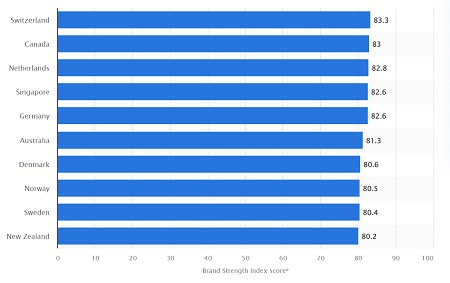
The Strongest Nation Brands in 2022
Storytelling
Storytelling is a crucial element of nation branding. Only through stories, an audience will learn what a country is about, what it offers, and how it is different from other places. There are many areas that stories can revolve around, some of them being: Industries, products and services; people; projects; landscapes and cities; achievements, scientific advancements, vision and objectives. Professional national storytellers work with all of them and combine them into several series of stories that emphasize the country’s positioning.
Here are some examples of what nation branding can look like:
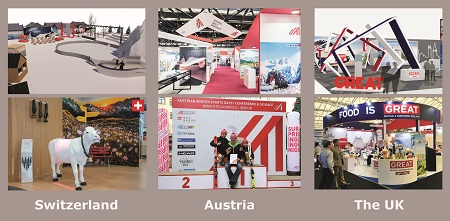
The tone and pace of telling the story are important as well, i.e. the degree of formality, the speed and level of detail, the positivity of the language, and whether there are elements of humor.
Stereotypes versus Modern Positioning
To increase brand recognition and build on what already exists, many countries have successfully used stereotypes as a basis for marketing themselves (think of the Swiss cross, the mountains or cows in Switzerland, the red maple leaves in Canada, or the Eiffel Tower in France) and then added the more modern elements like innovation, science, or information about market leadership.
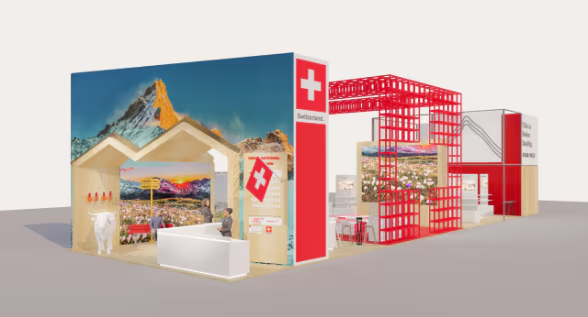
The Swiss National Pavilion at China International Consumer Products Expo in 2021: Stereotypes of the Swiss mountains and a cow were used in the front to maximize the recognition effect. The well-known Swiss cross was abstracted into a sculptural structure that framed the event space.
Conclusion
In order to promote their image and create a tangible outcome, countries have to apply tools that in the past, were predominantly used by big commercial brands. Creating a powerful nation brand will not only result in increased investment and tourism but also lead to higher exports and directly support local companies.

